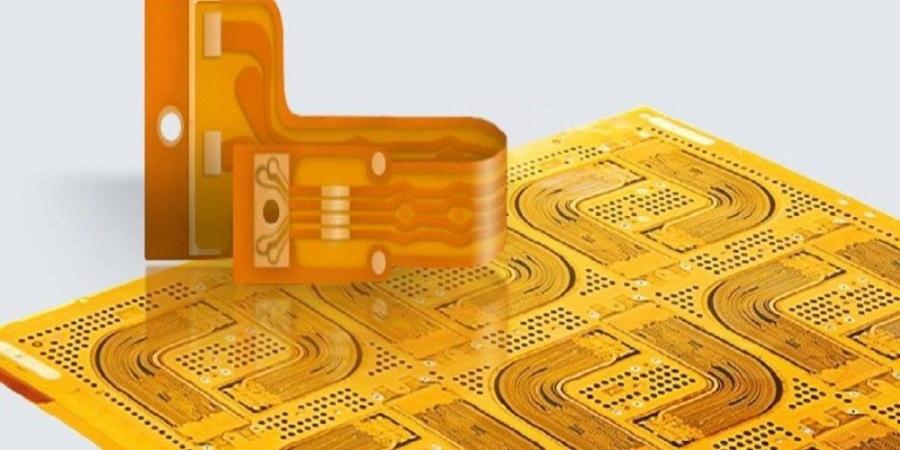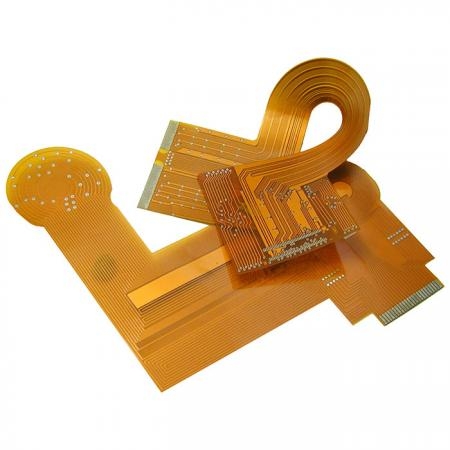Flexible circuit materials are essential in the rapidly expanding sector of flexible electronics. Primarily made from polyimide, marketed as Kapton by Dupont Corporation, these materials excel due to their impressive thermal stability, mechanical durability, and chemical resistance. The inherent flexibility of these materials is critical for applications that demand bending and flexing without sacrificing the integrity of the circuit. As an industry frontrunner, Best FPC offers top-tier flexible circuit materials that meet the dynamic requirements of contemporary technology, ensuring both high performance and reliability across diverse applications.

Understanding Flexibility in FPC Materials
Definition of Flexibility in FPC Materials
Flexibility in flexible printed circuits (FPC) refers to the ability of the materials to withstand bending and twisting while maintaining their functional integrity. This characteristic is crucial for integrating circuits into dynamically shaped and moving parts.
Factors Influencing Flexibility
- Material Composition: The choice of materials, primarily polymers like polyimide, greatly affects the flexibility. Materials must combine resilience and durability to handle repeated flexing.
- Thickness: The overall thickness of the FPC material plays a vital role. Thinner materials tend to be more flexible, allowing for tighter bends without breaking.
- Design Considerations: The layout of the circuit, including the placement of conductive tracks and components, influences flexibility. Strategic design can distribute stress and reduce strain on the circuit during flexing.
Importance of Flexibility in Various Applications
- Consumer Electronics: In devices like smartphones and foldable technology, flexibility enables innovative designs and user interfaces.
- Automotive Industry: Flexible circuits are used in car dashboards, sensors, and lighting systems, accommodating the compact and complex assemblies required.
- Medical Devices: Flexibility is essential in medical wearables and implants, where circuits must conform to anatomical shapes and movements.
- Aerospace and Defense: Flexible circuits withstand the vibrations and movement in spacecraft and military equipment, ensuring reliability under stress.
Best FPC's Flexible Circuit Material Offerings
Overview of Best FPC's Product Range
In the landscape of precision equipment and everyday devices, flexible PCBs have become increasingly significant. Best FPC is committed to being a leading manufacturer of flexible circuits and flexible printed circuit boards in Asia, striving to serve global customers with cutting-edge solutions.
Unique Features of Best FPC's Flexible Circuit Materials
Best FPC primarily utilizes "Kapton" by Dupont Corporation, a polyimide film-based material renowned for its heat resistance, dimensional stability, and low dielectric constant of 3.6. In addition to Kapton, Best FPC employs advanced materials from Rogers Corporation, including Rogers-Liquid-PhotoImageable-Coverlay, Rogers-RFlex1000, and Rogers-RFlex2005UL. The company also offers EMC shield materials such as SF_PC1000, SF_PC5000, and SF_PC5500, with EMC shielding effectiveness tested using the KEC method for frequencies ranging from 0.2 to 1000 MHz and the TSE method for 100 to 2000 MHz.
Customization Options Available
Best FPC offers tailored solutions to meet the specific needs of diverse applications, allowing clients to specify material properties and circuit designs that best fit their requirements.
Quality Assurance and Certifications
Best FPC adheres to stringent quality control standards, ensuring that all products meet or exceed industry benchmarks. The company's commitment to excellence is backed by various certifications, reflecting their dedication to reliability and customer satisfaction.

Applications of Best FPC's Flexible Circuit Materials
Consumer Electronics
- Wearable Devices: Best FPC's materials are integral in creating lightweight, flexible wearables that conform to the human body, enhancing comfort and functionality.
- Foldable Smartphones: These materials allow for the seamless operation of foldable screens, providing durability and flexibility essential for modern smartphone designs.
- IoT Devices: Flexible circuits enable compact and efficient designs in various IoT applications, from smart home devices to industrial sensors.
Automotive Industry
- In-vehicle Displays: Best FPC's materials are used in curved and flexible displays that adapt to the contours of vehicle interiors.
- Automotive Sensors: These materials are critical in sensors that monitor vehicle functions and external conditions, contributing to safer and smarter vehicles.
- Advanced Driver Assistance Systems (ADAS): Flexible circuits are employed in ADAS for better integration and reliability of systems that enhance vehicle safety and driving experience.
Medical Devices
- Medical Wearables: Best FPC materials facilitate the development of flexible and comfortable wearables for continuous health monitoring.
- Monitoring Devices: These materials ensure reliability and flexibility in devices that track patient health metrics.
- Diagnostic Equipment: Flexible circuits allow for more ergonomic and portable medical diagnostic equipment, improving patient care and diagnostic accuracy.
Aerospace and Defense
- UAVs and Drones: Flexibility and reduced weight of Best FPC's materials contribute to the efficiency and maneuverability of unmanned aerial vehicles.
- Avionics: Used in cockpit electronics, these materials withstand the rigors of flight while optimizing space and weight.
- Military Equipment: The materials enhance the reliability and functionality of devices that must perform in extreme conditions.
Case Studies
Example 1: Integration of Best FPC's Flexible Circuit Materials in a Foldable Smartphone Design
Best FPC's flexible circuits have been pivotal in the development of a leading foldable smartphone, offering enhanced screen durability and a seamless folding mechanism that withstands frequent use.
Example 2: Application of Best FPC's Materials in a Medical Wearable Device
A medical wearable for continuous glucose monitoring utilizes Best FPC materials to ensure comfort and accuracy, allowing patients to monitor their health with minimal intrusion and maximum reliability.
Example 3: Utilization of Best FPC's Materials in Automotive Sensor Systems
Automotive sensors equipped with Best FPC's flexible circuits have significantly improved the performance and integration of parking assist systems in modern vehicles, showcasing superior durability and adaptability.
Future Trends and Innovations
Emerging Technologies Impacting Flexible Circuit Materials
Advancements in material science are set to introduce new substrates and conductive inks that will further enhance the performance and application scope of flexible circuits.
Anticipated Advancements in FPC Material Technology
Ongoing research promises to yield FPC materials with even higher thermal stability, flexibility, and conductivity, enabling their use in more demanding environments and applications.
Potential New Applications for Flexible Circuits
Future applications could include bio-integrated electronics for advanced medical treatments and smart textiles that integrate seamlessly with everyday clothing, expanding the frontiers of technology and comfort.
Closing Words
Best FPC's flexible circuit materials stand at the forefront of innovation, adapting to the rigorous demands of diverse industries—from consumer electronics to aerospace. Their unmatched flexibility, combined with superior thermal stability and mechanical toughness, enables groundbreaking applications in technology and beyond. As industries continue to evolve, Best FPC remains dedicated to delivering high-performance solutions that drive the next generation of electronic advancements, ensuring reliability, efficiency, and cutting-edge design. With Best FPC, the future of flexible electronics is not just promising—it's already here, reshaping how we interact with technology every day.










 2024-05-14
2024-05-14
 BEST
BEST

.png)
.png)
.png)
.png)

.png)

